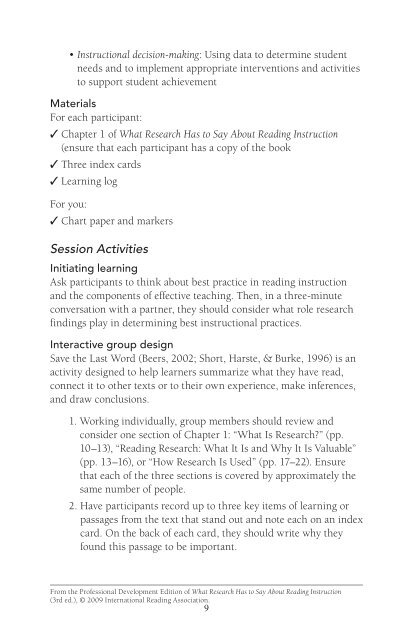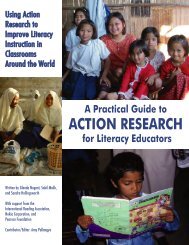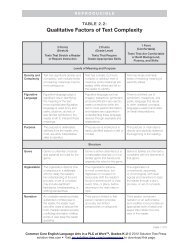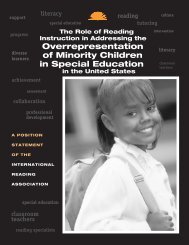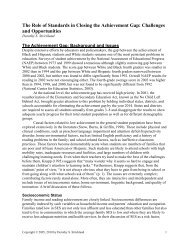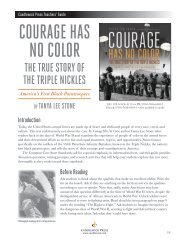What Research Has to Say About Reading Instruction - International ...
What Research Has to Say About Reading Instruction - International ...
What Research Has to Say About Reading Instruction - International ...
You also want an ePaper? Increase the reach of your titles
YUMPU automatically turns print PDFs into web optimized ePapers that Google loves.
• <strong>Instruction</strong>al decision-making: Using data <strong>to</strong> determine student<br />
needs and <strong>to</strong> implement appropriate interventions and activities<br />
<strong>to</strong> support student achievement<br />
Materials<br />
For each participant:<br />
✓ Chapter 1 of <strong>What</strong> <strong>Research</strong> <strong>Has</strong> <strong>to</strong> <strong>Say</strong> <strong>About</strong> <strong>Reading</strong> <strong>Instruction</strong><br />
(ensure that each participant has a copy of the book<br />
✓ Three index cards<br />
✓ Learning log<br />
For you:<br />
✓ Chart paper and markers<br />
Session Activities<br />
Initiating learning<br />
Ask participants <strong>to</strong> think about best practice in reading instruction<br />
and the components of effective teaching. Then, in a three-minute<br />
conversation with a partner, they should consider what role research<br />
findings play in determining best instructional practices.<br />
Interactive group design<br />
Save the Last Word (Beers, 2002; Short, Harste, & Burke, 1996) is an<br />
activity designed <strong>to</strong> help learners summarize what they have read,<br />
connect it <strong>to</strong> other texts or <strong>to</strong> their own experience, make inferences,<br />
and draw conclusions.<br />
1. Working individually, group members should review and<br />
consider one section of Chapter 1: “<strong>What</strong> Is <strong>Research</strong>?” (pp.<br />
10–13), “<strong>Reading</strong> <strong>Research</strong>: <strong>What</strong> It Is and Why It Is Valuable”<br />
(pp. 13–16), or “How <strong>Research</strong> Is Used” (pp. 17–22). Ensure<br />
that each of the three sections is covered by approximately the<br />
same number of people.<br />
2. Have participants record up <strong>to</strong> three key items of learning or<br />
passages from the text that stand out and note each on an index<br />
card. On the back of each card, they should write why they<br />
found this passage <strong>to</strong> be important.<br />
From the Professional Development Edition of <strong>What</strong> <strong>Research</strong> <strong>Has</strong> <strong>to</strong> <strong>Say</strong> <strong>About</strong> <strong>Reading</strong> <strong>Instruction</strong><br />
(3rd ed.), © 2009 <strong>International</strong> <strong>Reading</strong> Association.<br />
9


